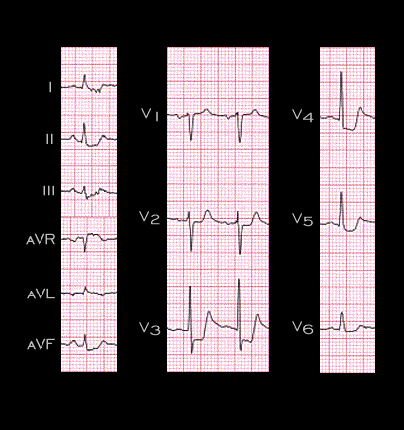
The rate is slightly rapid (105/minute) but the rhythm is sinus. The most obvious abnormality is the 3 mm of ST segment depression in leads V3 and V4 and lesser degrees of ST depression in leads I, II, III, aVF, V2 and V5. Notice also that there is 1 mm of ST elevation in lead aVR and slight ST elevation in lead aVL.
